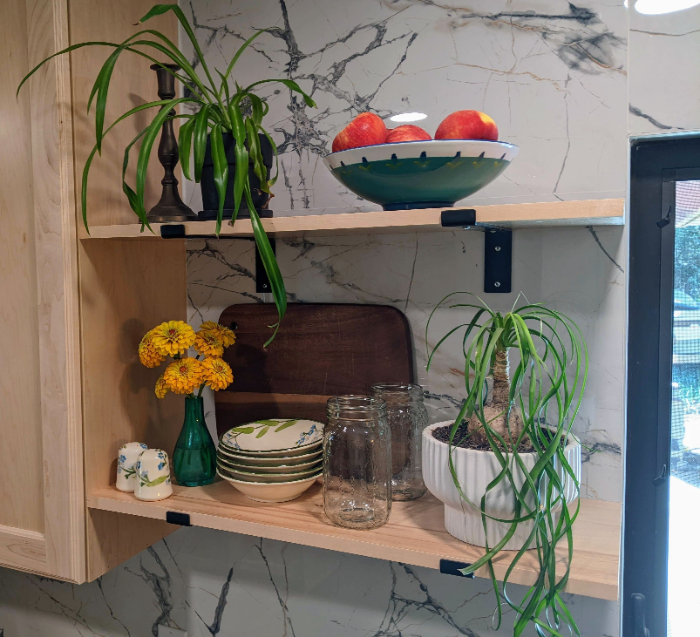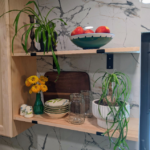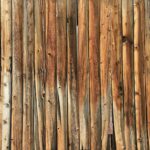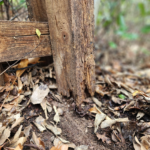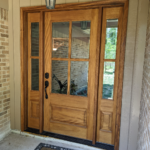Four Things to Consider When Mounting Shelves in Elgin, TX
As a Handyman in Elgin, Texas, one of the things I get asked to do is to hang or mount shelving.
Hanging shelves is normally a simple thing to do, IF you ask yourself the right questions first.
Here are some things you need to ask yourself when selecting and mounting a shelf.
- The first and most important question is how much weight does the shelf need to hold?
- What size shelf will fit in your space and serve its purpose?
- Is the type of shelf right for the job? There are many different types of shelving on the market today, including wood, metal, and plastic. Are you choosing the right one?
- Am I capable of installing this shelf and being happy with the result?
Let me break it down for you.
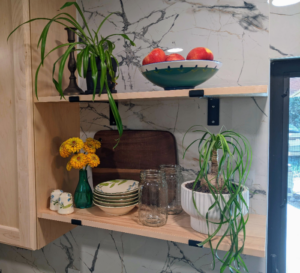
1. Weight
Weight is a key factor in deciding what shelf to install.
While the shelf material does have a role to play in some cases, the deciding factor of how much weight can be put on a shelf generally relies on how the shelf is mounted.
Bracket Type
The first part in considering how to mount a shelf is the bracket.
There are so many styles of shelf brackets you can choose from that it can be hard to decide.
While look is important in some cases, the weight rating of the bracket is even more critical.
If you are buying from a big box store, most of the brackets they carry will disclose the weight they are able to support.
Anchor Type
The second factor when considering weight and mounting is how the bracket anchors to the wall.
As a rule of thumb, I always try to secure as many of the brackets as possible into a stud. This allows for the strongest and most reliable connection, assuming the right screws are used.
It is not always possible to screw a bracket into a stud, depending on the shelf size and bracket spacing. When this is the case, it comes down to using the right type of anchors.
The material type and dimensions need to be considered, along with the weight, when choosing the correct anchor for the job. (Read my article on anchor types for more info on this)
2. Shelf Size
The size of the shelf you are installing is also important.
You need to choose a shelf that is big enough to fit whatever item you want to put on it, but that also fits in the space you have for it.
I have run into a number of shelves in various places because a corner sticks out too far into a walking path.
If you have a bracket design and type chosen, you also need to consider if the bracket size will work with the shelf size.
If you have a 4” bracket and a 12” shelf, anything put on the edge of the shelf has the potential to flip the shelf.
At a minimum, the shelf bracket should pass the center of the shelf. The closer it is to the edge, the more stability it will provide.

3. Shelf type
There are many types of shelving available, but what type is right for you?
For storage of boxes in a closet or garage, you may consider wire shelving. It is sturdy and lighter than a solid metal or wood shelf.
However if smaller objects are going to be placed on the shelf, size of the opening should be considered, so objects don’t fall through or get stuck.
For shelving that everyone is going to see, you can use a wood shelf that is stained or painted.
This is a very customizable option that can fit almost any look, but it can get complicated and expensive depending on what materials you choose.
4. Can you do it yourself?
The short answer to this is maybe.
I am a DIY guy by nature so I am fairly confident when I take on new challenges, but it is not for everyone.
Simple shelves that are prefinished can be easy to install. The more customization you add to it, the more complicated the install can be and sometimes this leads to unmet expectations.
This is when you call a handyman like me to help you out and make sure your shelf turns out like you imagined.
Give me a call today for any of your shelving or handyman needs, or fill out this estimate request form.
https://fixesandfences.com/request-a-quote/
737-232-9152
